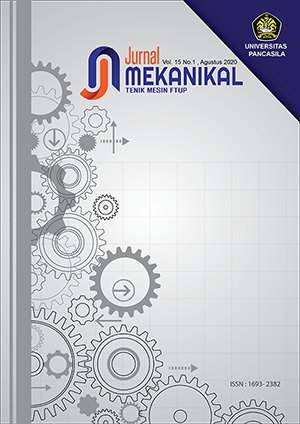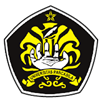PENGEMBANGAN KOMPOSIT MATRIKS POLIMER BERPENGUAT SERAT TANDAN KOSONG KELAPA SAWIT
Abstract
Palm empty fruit bunches (PEFB) fiber is one of the wastes produced by processing crude palm oil (CPO) factories. The existence of abundant oil palm plantations can have negative impacts, such as processing that leaves waste. Therefore, if the utilization of PEFB can be developed more widely, it will increase the economic value of PEFB waste and be useful for reducing environmental pollution. The composites used are renewable natural fibers. Palm empty fruit bunch (PEFB) fiber was chosen because it has renewable or renewable properties. Composites reinforced with natural fibers have another advantage, namely having a low density so that they can produce a lighter composite. The process of making composites by means of hand lay-up is done manually by placing the fibers into the mold then wetting the fibers with a roller or brush with a random fiber orientation along 4 cm with a volume fraction of 3%, 5% and 8%. From the test results the largest value for tensile stress with a fiber volume fraction of 3% with the largest value of 30 MPa. The tensile strain with the largest value is 18% at 5% fiber volume fraction. The value of flexural strength with the highest average is at the fiber volume fraction of 8% of 54.28 MPa, the fiber volume fraction of 3% is 28.57 MPa and the fiber volume fraction of 5% is 32.75 MPa


 SEKERTARIAT :
SEKERTARIAT :